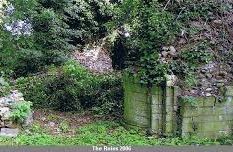
URPoint Details
Blythburgh owes much of its importance to the coast and its importance in Saxon times when it was the scene of battle between Anna, the Christian king of East Anglia and Penda of neighbouring Mercia.
It was also a royal ‘burgh’ housing a mint and according to the Domesday Book taxed at a rate of 3,000 herrings.
Small village on the River Blyth is set in very pretty countryside. On the approach into the village the magnificent spires and towers of the church dominate the landscape.
Church of the Holy Trinity was built in the 15th century and is 127ft long and 54ft wide. The pillars still bear the scars when Cromwell used the nave as a stable. There is a wealth of medieval treasures including flying angels, 15th century wood carving and a fascinating tale of the finger marks of the Devil scorched on the inside of the great north door as he fled after causing devastation and death in the great storm of 1577, bears witness.Norman Gwatkin Reserve is a large area of marsh and fen with Alder and Willow coppice, walkway and 2 hides.
- Type:
- Landmark














